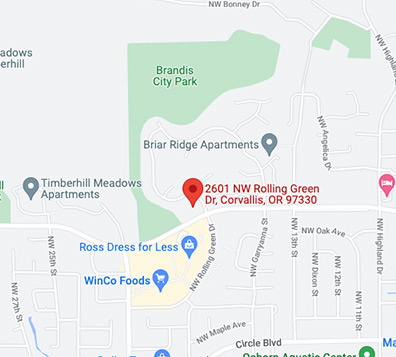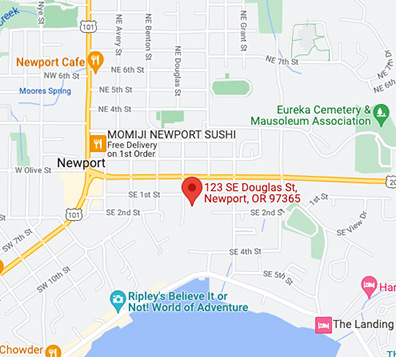Dental Implants
A dental implant is an artificial tooth root that is placed into your jaw to hold a replacement tooth, bridge, fixed denture, or removable denture. Dental implants may be an option for people who have lost a tooth or multiple teeth due to periodontal disease, an injury, or other reasons.
Dental implants may be performed in areas where teeth are already missing, and may be possible at the same time that a tooth is removed (“immediate implant”). Some dental implants require bone to be augmented at the time of implant placement (“bone grafting”), while other areas require a bone-building procedure prior to implant placement (“sinus augmentation” or “ridge augmentation”).
Some patients may desire intravenous (IV) sedation to carry out implant-related treatments, which can be performed by Dr. Mueller to help keep you more comfortable during these treatments.
Are You a Candidate For Dental Implants?
The ideal candidate for a dental implant is in good general and oral health. Adequate bone in your jaw is required to support the implant. The best candidates have healthy gum tissues that are free of periodontal disease.
Dental implants are intimately connected with the gum tissues and underlying bone in the mouth. Since periodontists are the dental experts who specialize in precisely these areas, they are ideal members of your dental implant team.
Not only do periodontists have experience working with other dental professionals, they also have the special knowledge, training, and facilities you need to attain teeth that look and feel just like your own. Your dentist and periodontist will work together to make your dreams come true.
Typically the first step is to obtain a 3-Dimensional Scan (Cone Beam Computed Tomography) to analyze the area for the specific needs of the implant site. Unlike conventional 2-dimensional dental X-rays, a 3-Dimensional Cone Beam CT can observe the areas for dental implant placement with increased accuracy and precision.
What is a Dental Implant Procedure Like?
This procedure is a team effort between you, your dentist, and your periodontist. Your periodontist and dentist will consult with you to determine where and how your implant should be placed. Depending on your specific condition and the type of implant chosen, Dr. Mueller will create a treatment plan tailored to meet your needs.
Some patients may desire intravenous (IV) sedation to carry out implant-related treatments, which can be performed by Dr. Mueller to help keep you more comfortable during these treatments.
- Replacing a Single Tooth: If you are missing a single tooth, one implant and a crown can replace it.
- Replacing Several Teeth: If you are missing several teeth, implant-supported bridges can replace them.
- Replacing All of Your Teeth: If you are missing all of your teeth, an implant-supported full bridge or full denture can replace them.
Bone-Building procedures
- Sinus Augmentation: A key to implant success is the quantity and quality of the bone where the implant is to be placed. The upper back jaw has traditionally been one of the most difficult areas to place dental implants successfully due to insufficient bone quantity and quality and the close proximity to the sinus. Sinus augmentation can help correct this problem by adding and developing bone in the maxillary sinus for the placement of dental implants. Sinus augmentation may be required prior to future implants, but may also be performed at the time of dental implant placement. Two forms of sinus augmentation can be performed, depending on the situation and amount of bone required to be added: 1) Conventional lateral window sinus augmentation, 2) Indirect/Crestal sinus augmentation (“sinus bump”).
- Ridge Modification / Augmentation: Deformities in the upper or lower jaw can leave you with inadequate bone in which to place dental implants: areas where a significant jaw concavity has resulted following tooth loss. To correct the problem, the gum is lifted away from the ridge to expose the bony defect. The defect is then filled with bone or bone substitute to build up the ridge, a barrier membrane is draped over the bone graft, and the tissues are replaced and sutured. Ridge modification has been shown to improve appearance greatly and raise your chances for successful implants that can last for years to come.
- Tooth Extraction with Bone Grafting/Augmentation: In an area where a tooth requires removal/extraction and a dental implant is considered or anticipated, it may be preferable to perform bone grafting at the same time as tooth removal. This is especially true for teeth with considerable disease and bone loss, whether from a tooth or endodontic infection, advanced periodontal disease, a vertical root fracture, or in an area where the tooth lies close to anatomic structures such as the sinus or nerves. Extraction with bone building can be beneficial to make a future implant more feasible. In this process, a tooth is carefully removed, any and all diseased tissue is removed, small particles of bone are placed in the area of the previous tooth root(s), and the area is covered by a barrier membrane. The area is allowed to heal three to six months prior to 3-dimensional imaging and future implants.
What Can I Expect After Receiving a Dental Implant?
As you know, your own teeth require diligent at-home oral care and regular dental visits. Dental implants are like your own teeth and will require the same care. In order to keep your implant clean and plaque-free, brushing and flossing still apply!
After treatment, Dr. Mueller will work closely with you and your dentist to develop the best care plan for you. Periodic follow-up visits will be scheduled to monitor your implant, teeth, and gums to make sure they are healthy.


